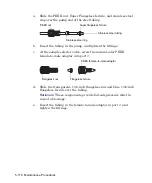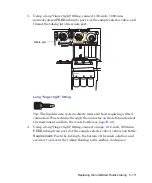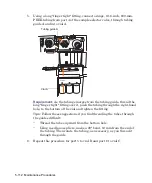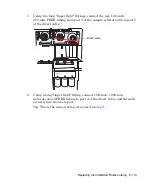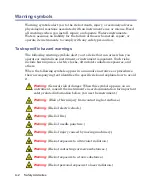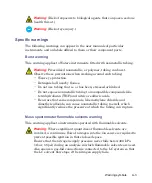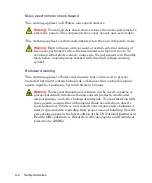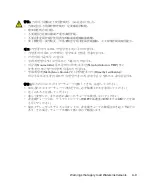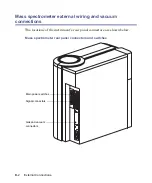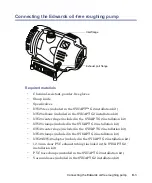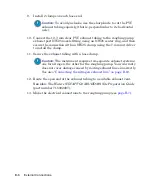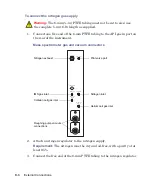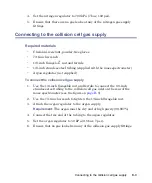
A-6
Safety Advisories
Warnings that apply to all Waters instruments
When operating this device, follow standard quality control procedures and
the equipment guidelines in this section.
Attention:
Changes or modifications to this unit not expressly approved by the
party responsible for compliance could void the user’s authority to operate the
equipment.
Important:
Toute modification sur cette unité n’ayant pas été expressément
approuvée par l’autorité responsable de la conformité à la réglementation peut
annuler le droit de l’utilisateur à exploiter l’équipement.
Achtung:
Jedwede Änderungen oder Modifikationen an dem Gerät ohne die
ausdrückliche Genehmigung der für die ordnungsgemäße Funktionstüchtigkeit
verantwortlichen Personen kann zum Entzug der Bedienungsbefugnis des
Systems führen.
Avvertenza:
qualsiasi modifica o alterazione apportata a questa unità e non
espressamente autorizzata dai responsabili per la conformità fa decadere il
diritto all'utilizzo dell'apparecchiatura da parte dell'utente.
Atencion:
cualquier cambio o modificación efectuado en esta unidad que no
haya sido expresamente aprobado por la parte responsable del cumplimiento
puede anular la autorización del usuario para utilizar el equipo.
注意:未經有關法規認證部門允許對本設備進行的改變或修改
,
可能會使使用者喪失操作該設
備的權利。
注意:未经有关法规认证部门明确允许对本设备进行的改变或改装,可能会使使用者丧失操
作该设备的合法性。
주의
:
규정
준수를
책임지는
당사자의
명백한
승인
없이
이
장치를
개조
또는
변경할
경우
,
이
장치를
운용할
수
있는
사용자
권한의
효력을
상실할
수
있습니다
.
注意:規制機関から明確な承認を受けずに本装置の変更や改造を行うと、本装置のユー
ザーとしての承認が無効になる可能性があります。
Summary of Contents for SYNAPT G2
Page 18: ...xviii Table of Contents...
Page 46: ...2 8 Starting Up and Shutting Down the Mass Spectrometer...
Page 66: ...3 20 Configuring the LockSpray Source...
Page 228: ...B 24 External Connections 7 Click Next Result The software installs 8 Click Finish...
Page 232: ...C 4 Materials of construction and compliant solvents...





